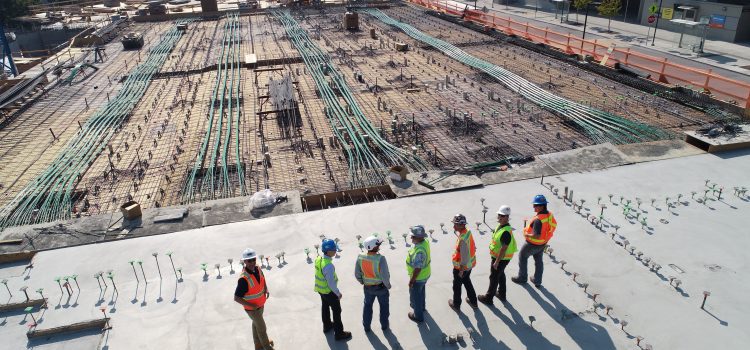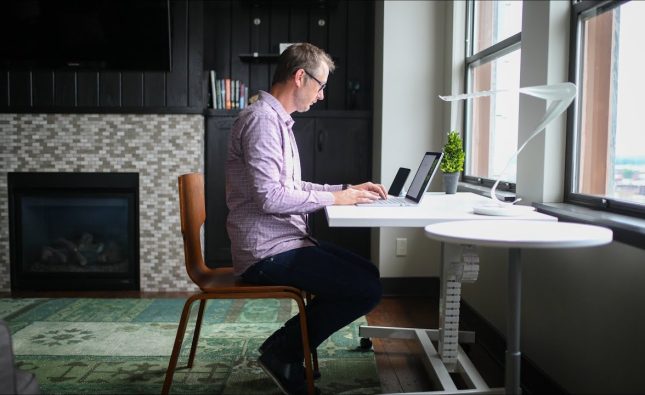
As we continue to witness the devastating impact of climate change, it’s become increasingly clear that sustainable practices are no longer optional – they’re necessary. And this holds especially true for the construction industry, which is responsible for a significant amount of greenhouse gas emissions and waste production. Fortunately, there’s been a surge in green building initiatives, with architects and builders adopting eco-friendly materials and methods in order to reduce their carbon footprint. But what does this mean for the future of construction jobs? In this post, we’ll explore how sustainability is shaping the industry and creating exciting new opportunities for skilled workers who are passionate about protecting our planet.
The Origins of Sustainability in Construction
In recent years, sustainability has become a topic of interest for construction professionals. The benefits of sustainable practices are numerous, including reduced energy consumption, less waste created, and improved air quality.
The origins of sustainability in construction date back to the early 1990s, when green building began to gain popularity. At the time, green building was seen as a way to reduce environmental impact and improve occupant comfort. Today, sustainability is considered an essential part of good construction practices.
Sustainability in construction can be divided into three main categories: environmental, economic, and social. Environmental considerations include managing water usage and controlling emissions, while economic considerations focus on creating a cost-effective project that meets all safety and health requirements. Social concerns include ensuring that workers are treated fairly and that communities impacted by construction are given an equal voice in the planning process.
While there is no one right way to achieve sustainability in construction projects, following these guidelines can help minimize environmental impact:
1) Use efficient lighting and heating systems: Incandescent bulbs and gas heaters consume more energy than LED or central heating systems. Opt for low-energy lighting options where feasible or install solar panels to generate your own electricity.
2) Conserve resources: Shop for materials that are environmentally friendly or recycled whenever possible. Follow manufacturer recommendations for using green Seal products and choosing environmentally responsible bidding processes.
3) Minimize waste: Dispose of waste properly by recovering materials such as wire insulation and
The Current State of Sustainability in Construction
Construction has always been a vital sector in the economy, and it is expected to continue growing in the coming years. In order to ensure that construction remains sustainable and environmentally friendly, the industry must continue to reform its practices.
There are many ways that construction can be more sustainable, and many companies are already taking steps in this direction. One of the most important aspects of sustainability is reducing energy consumption. By using green building materials and designing structures that use less energy, construction firms can help save both money and energy.
Another way that construction firms can become more sustainable is by creating jobs that are environmentally friendly. Sustainable construction jobs may include jobs such as landscape architects, engineers, planners, and others who are involved in making buildings more environmentally friendly. This type of job growth will help to preserve natural resources and create good paying jobs for people who might not have otherwise had them.
Sustainability is an important issue for all sectors of the economy, and the construction industry is no exception. By taking these steps, construction firms can ensure that their products are both environmentally friendly and economically viable
The Future of Sustainability in Construction
The future of sustainability in construction is looking bright. With increasing awareness of the benefits of sustainability, more and more architects and builders are embracing green building practices. This has created a demand for sustainable construction professionals who can help design and build projects that are both energy efficient and environmentally friendly.
The growth of green building means that many construction jobs will continue to be in demand well into the future. In fact, according to the U.S. Bureau of Labor Statistics, employment in the construction industry is expected to grow by about 12 percent through 2020, which is much faster than the overall average for all occupations. This growth will be particularly pronounced in environmental protection and restoration occupations, which are projected to grow by 27 percent between now and 2020.
As the demand for sustainable construction grows, so too will the number of job opportunities available. Keep an eye out for upcoming developments that could impact the future of sustainability in construction, including new regulations on energy efficiency and climate change mitigation, as well as innovations in green building technology that could lead to even more dramatic reductions in energy use and carbon emissions. In the meantime, stay current on trends in this rapidly growing field with related articles on our website or through our blog subscriptions RSS feed.
Implications for the Construction Industry
As sustainability becomes more and more a focus for the construction industry, the implications for the workforce are of great interest. According to a report from The Associated General Contractors of America (AGC), nearly two-thirds of all construction workers are expected to be employed in jobs related to sustainability by 2020.
This growth is due in part to stricter building codes and increasing consumer awareness about energy efficiency and environmentalism. Yet it’s also indicative of how closely related sustainability is becoming with traditional construction practices. In fact, many green building techniques can actually save construction companies money on their overall project costs.
Here are some key reasons why:
1) Reduced air and water usage: One of the most significant ways that green buildings reduce greenhouse gas emissions is by reducing the amount of energy required to operate heating, cooling and ventilation systems. By adopting measures like high-performance windows and insulation, builders can lower their overall annual energy costs by up to 50%.
2) Reduced waste generation: With less use of materials and waste products, green buildings tend to have smaller footprints than regular constructions. This means they require significantly less landfill space once they’re completed, which can save both time and money on disposal costs.
3) Improved safety: By taking into account environmental factors when designing facilities, builders can improve their overall safety record by ensuring that potential accidents happen less often. For example, installing underground drainage systems can help prevent flooding during storms or evacuations, while integrating green building
Conclusion
Construction jobs are becoming increasingly sustainable and green. With the rise of green building and sustainability, there is a growing need for skilled construction workers who can understand and integrate these concepts into their work. In addition to being environmentally responsible, sustainable construction practices also save money on energy bills, create less waste, and require less maintenance than traditional construction methods. The future of construction looks bright, thanks in part to the growing awareness of sustainability and green building among employers and employees alike.










